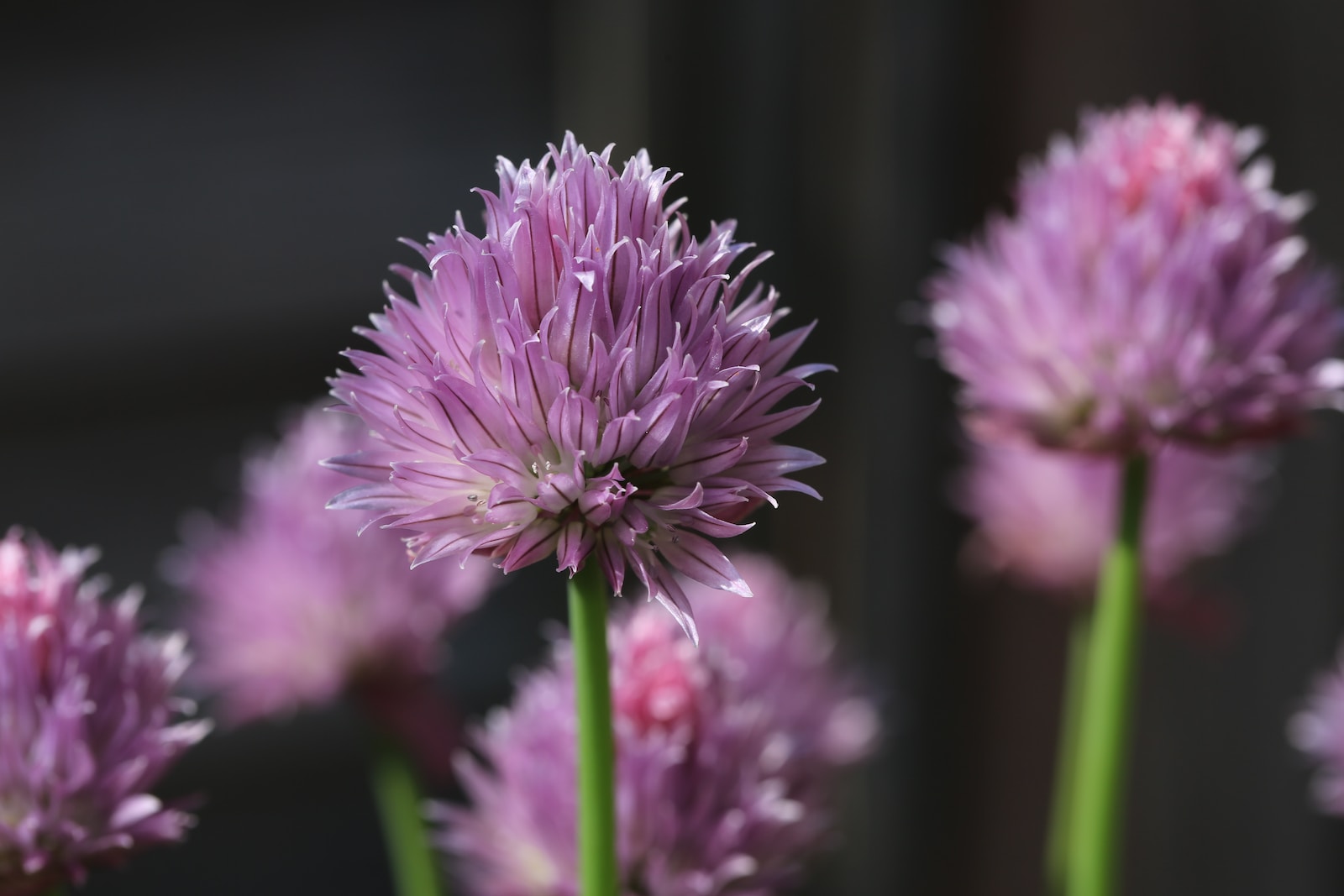Chives, the smallest species of the edible onions, are a popular herb used in cuisines around the world. With a mild flavor that is more delicate than that of regular onions, chives are often used to garnish dishes and enhance the flavors of salads, soups, and sauces. The beautiful purple flowers that bloom on the stems add an aesthetic appeal to gardens and can even be used in culinary preparations.
Chives are a perennial plant, meaning they come back year after year without needing to be replanted. This makes them an attractive option for both novice and experienced gardeners. Besides their culinary use, chives are also known to have some medicinal properties and have been used traditionally to aid digestion and reduce inflammation.
Growing chives is relatively easy, and they can be cultivated in pots or directly in the garden. Their hardiness and adaptability to various conditions make them a rewarding herb to grow. They are equally suitable for ornamental gardens, where their vibrant flowers attract pollinators like bees and butterflies.
| Common Names | Chives |
|---|---|
| Botanical Name | Allium schoenoprasum |
| Family | Amaryllidaceae |
| Plant Type | Perennial Herb |
| Mature Size | 12-18 inches tall |
| Sun Exposure | Full Sun to Partial Shade |
| Soil Type | Well-drained, rich soil |
| Hardiness Zones | 3 to 9 |
| Native Area | Europe, Asia |
Chives Care
Chives are low-maintenance plants that thrive in a variety of conditions. Planting them in a sunny spot with well-drained soil will yield the best results. Regular watering, especially in the dry season, will keep the plants healthy and promote growth.
Fertilizing is typically unnecessary for chives, but adding some organic matter like compost can boost growth. During the growing season, removing spent flowers will help the plant direct energy to the leaves. In colder regions, mulching can protect the plants during winter.
Light Requirement for Chives
Chives grow best in full sun but can tolerate partial shade. Providing them with at least 6 hours of sunlight daily will ensure healthy growth and flavor development.
Soil Requirements for Chives
Chives prefer well-drained soil rich in organic matter. Adding compost or well-rotted manure can enhance the soil structure. Avoiding waterlogged conditions is key to preventing rot.
Water Requirements for Chives
Chives need consistent watering, especially in hot weather. The soil should be kept moist but not soggy. Drip irrigation or a soaker hose can provide even moisture.
Temperature and Humidity
Chives are hardy in zones 3 to 9 and can tolerate frost. They grow best in moderate temperatures but can adapt to various humidity levels.
Fertilizer
Generally, chives don’t require much fertilizing. An application of well-balanced fertilizer in the spring can be beneficial but is usually not necessary.
Pruning Chives
Pruning chives involves cutting back the leaves to about 2 inches above the ground. This can be done after flowering or at the end of the growing season to encourage new growth.
Propagating Chives
Chives can be easily propagated by division. Divide the clumps every 3-4 years in the spring or early autumn and replant.
How To Grow Chives From Seed
Chives can be grown from seed either indoors, 6-8 weeks before the last frost, or directly sown outdoors in the spring. Germination takes about 2 weeks.
Common Pests & Plant Diseases
Aphids
These small insects can be washed off with water or controlled with insecticidal soap.
Downy Mildew
A fungal disease that can be prevented by proper spacing and airflow around the plants.
Common Problems With Chives
Yellowing Leaves
Caused by overwatering or poor drainage. Adjust watering practices and improve soil if necessary.
Flowering Reduction
Excessive shade or poor soil might reduce flowering. Move to a sunnier spot or improve soil with organic matter.
Pro Tips
- Plant chives near roses to help deter aphids.
- Harvest by cutting the leaves from the outside of the clump, leaving the center untouched to promote new growth.
- Chives can be frozen or dried to preserve their flavor.



